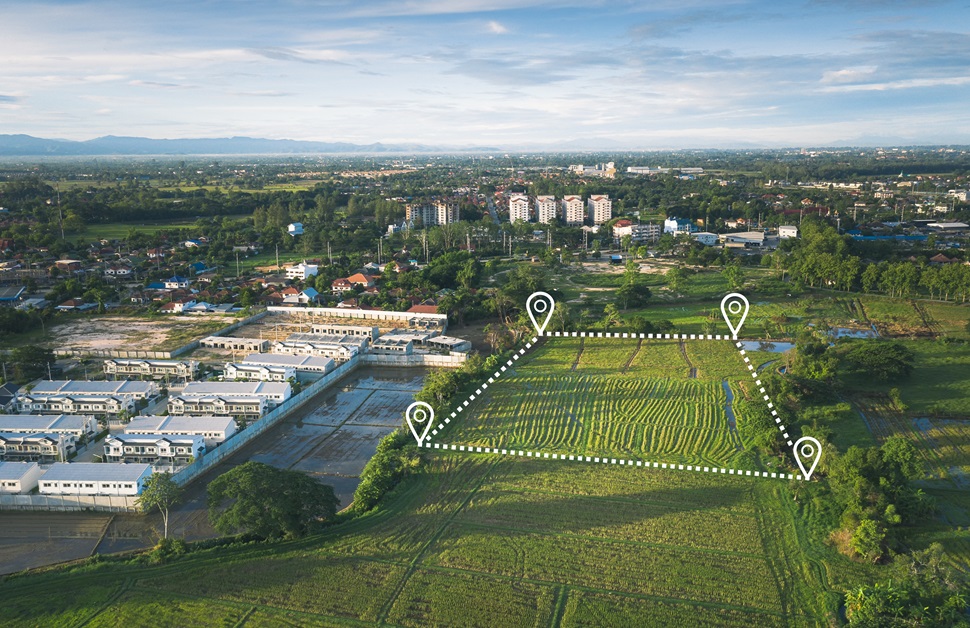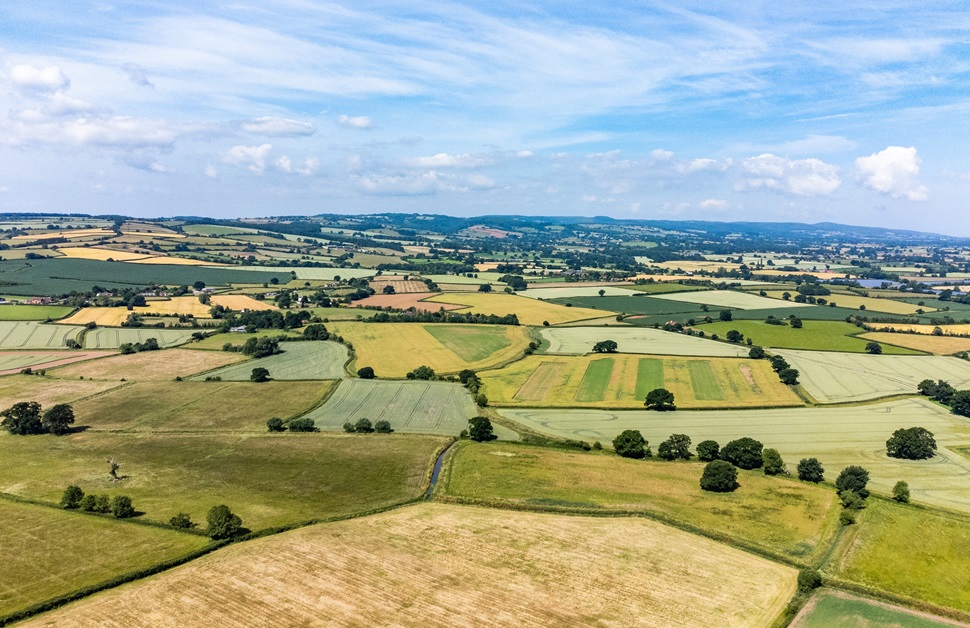Purchasing Biodiversity Net Gain Units for Sale
Developers all over England will now be fully aware of biodiversity net gain (BNG) and the impact it has on applicable new developments. It was announced in 2021, and after a two-year transition period and several delays, it finally became an active part of planning law in February 2024, followed by a secondary edition for small sites two months later.
The BNG regulations specifically insist that planning projects consider the immediate needs and long-term goals of the natural environment, insisting that biodiversity value on the development site is increased to a measurably better state of 10% for at least the next 30 years. It is impossible for developers to disregard the biodiversity net gain obligations, as it will play a significant role in the outcome of most planning applications for relevant schemes.
Before local planning authorities are suitably happy that a developer has been able to meet BNG obligations, it will need to be confirmed in writing in the form of a BNG plan. It will always be the aim of an ecological consultant to achieve on-site BNG requirements, but if it simply isn’t possible due to the circumstances of the development, the nature of the site or a lack of habitat creation, restoration or enhancement opportunities, other methods are available.
In this article, Arbtech explains how developers can buy statutory biodiversity credits or biodiversity units off-site as a last resort whenever it isn’t realistic to meet the mandate on-site.
Methods of Buying Units or Credits
Seeing biodiversity net gain delivered onsite is the preferred option from the perspective of environmental experts and local authorities. Unfortunately, however, it isn’t always manageable, prompting environmental consultants to suggest one of two other methods of securing the 10% increase and remaining fully compliant with planning laws.
Biodiversity Offsetting
A common way of delivering biodiversity outside of the site is through choosing to purchase BNG units from a habitat bank. Either through a third-party company like Arbtech, a BNG partner or an applicable organisation, habitat banks are local area habitats to the development site that have already been created, restored or enhanced, making them valuable and worthy of matching the desirable unit amount.
Land managers and landowners maintain patches of land across England that are purposefully designed to be bought by developers to generate net gains of biodiversity away from the site. The cost of off-site units can fluctuate dramatically, but as buying them can remove any issues with fulfilling the planning policy, it is usually acknowledged as the second best option after applying on-site changes.
Statutory Credits
Buying statutory biodiversity credits enables a developer to pay for broader ecological benefits across the country whenever it simply isn’t feasible to improve the condition of the site or purchase sufficient offsite units from a landowner. It is, however, not as highly regarded as buying biodiversity units from a local standpoint because the credits will potentially fund conservation efforts outside of the local area.
Unlike ongoing offsite habitat management involving the purchase of units through a private or open market, the purchase of credits is regulated by and bought from the government with input from DEFRA and Natural England. Although the BNG unit cost will be different based on the habitat type and the number of units needed, the BNG credit cost – whether high or low – doesn’t change.

Steps to Deliver Biodiversity Net Gain
A process for accomplishing the biodiversity net gain (BNG) mandate is in place, with the only difference on a case-by-case basis occurring when a developer is left with no choice but to buy BNG units or BNG credits due to being unable to enact enough biodiversity improvements on the site.
Broken down into simple steps, the process for achieving the BNG obligations is as follows:
Step 1: Stage a BNG Assessment
As soon as it has been made clear that biodiversity net gain applies to their next project, the developer would need to book a BNG survey. The ecological consultancy at Arbtech undertakes BNG services, and over the course of a prior research desk study, baseline assessment of present habitats and condition assessment of habitat quality, a biodiversity gain plan can be created to outline a suitable way forward.
Making comparisons between the current and predicted biodiversity value, the ecological consultant leading the assessment will use a biodiversity metric to turn the pre- and post-development ecological value of the site into numerical figures. The gap between the two numbers will then be easy to see, and based on that, they will be able to consider ways to eliminate the deficit and build on it by 10%.
Step 2: Attempt to Achieve BNG On-Site
Always recognised as the priority outcome, an intense focus will be put on efforts to retain existing biodiversity value on the development site and build on it by 10% (or more depending on the stipulations of the local planning authority). Possible methods of doing this include changing the development plans to retain vital assets, restoring or enhancing certain features, or creating new habitats.
Sustainable development can also increase biodiversity value, such as incorporating green roofs, habitat corridors or planting schemes to boost ecological quality without infringing on the goals of the planning project. If the suggestions are unable to satisfy BNG, it will be at this point that the ecologist will be forced to advise other ways of reaching the required level of retention and enhancement.
Step 3: Refer to Off-Site Biodiversity Units
Using a private market to buy from third-party companies like Arbtech or an open market to buy from approved organisations, developers can invest in local habitat banks to accomplish the BNG requirements in the nearby area. By opting to purchase BNG units, the local environment can be improved upon even though it hasn’t been possible to secure net gains of biodiversity on the specific development site.
In order to ensure that the landowner or land manager will fully comply with their duties to protect the biodiversity of the site and effectively fulfil BNG on behalf of the developer, a conservation covenant will form a legally binding agreement. With that, certain guarantees will be held in place that the person responsible for the site will sustain the increase in biodiversity quality for at least 30 years.
Step 4: Turn to Statutory Biodiversity Credits
If local assets are unavailable or on-site or off-site changes still don’t address the deficit between your pre- and post-development biodiversity values, the remaining option will be to buy statutory biodiversity credits. The biodiversity net gain plan would outline how many biodiversity units are needed, and using this figure, the developer can determine how many biodiversity credits need to be purchased.
For every one unit that needs to be compensated for, a developer has to buy two credits, and sales for biodiversity credits are handled by conservation and government bodies. During the application stage, certain details need to be submitted, such as information about the planning project, the number of required biodiversity units and proof that credits are needed, usually indicated by a BNG plan.

Buying BNG Units or Credits
In the section below, we provide advice for buying BNG credits and BNG units:
BNG Units for Sale
Land with biodiversity net gain units for sale can be sourced by a third-party company. Arbtech can help with this if you get in touch with our team and enquire about it. After the completed BNG plan has confirmed that you will need to buy BNG units, it can be passed on to the local planning authority. Once an application for planning permission has been accepted subject to the necessary changes moving forward, you can then reserve suitable land with BNG units for sale.
A 10% deposit will be paid for the biodiversity units, securing them for the next four months and giving you enough time to continue with other parts of the development. The remaining 90% cost of the required land with biodiversity net gain units for sale will then need to be paid, allowing for a purchase number, agreement and DEFRA metric to be made available to the developer, with the agreement primarily acting as proof that units were purchased.
BNG Credits for Sale
Within the BNG plan, all of the criteria that led you to pursue BNG credits for sale will be made clear, such as a demonstration that efforts to utilise the mitigation hierarchy fell short of the required biodiversity enhancements. It will also include a detailed explanation of the biodiversity units lost as a result of the development and a translation of how many biodiversity credits will be needed.
Accredited organisations such as DEFRA and Natural England are able to offer further support any time a developer has to buy BNG credits. An application would need to incorporate details about the project, the calculated credit requirement, and evidence that on-site changes and the acquisition of local off-site units were not possible. The credits will then need to be paid for, a certificate will be provided as proof, and regulators may go on to provide updates regarding ongoing conservation work the credits paid for.
More information on purchasing biodiversity credits is available via the Gov.UK website.
Ask for Biodiversity Net Gain Advice from Arbtech
Ever since the mandate was first announced, Arbtech has been involved in upholding monitoring and reporting obligations when it comes to the latest updates to biodiversity net gain. That way, we’ve been able to keep at the forefront of any changes and prepared to assist developers with planning projects impacted by the policy.
By choosing to work with our team, we can minimise disruption to ecological assets on your site, carry out the necessary ecosystem services, and provide a BNG plan that includes management and mitigation instructions that will help you to meet the requirements and obtain planning approval. In addition to that, if you need statutory biodiversity credits or BNG units for sale, we can assist you if you simply contact us via our dedicated email address at [email protected].
For assistance with the biodiversity net gain obligations and steps that will ensure you remain fully compliant, reach out to our team today, and we will be able to provide you with a free quote based on the details of your site and project. We can then instruct an ecological consultant to attend your site, undertake an assessment, create a biodiversity net gain plan, and support planning applications.


